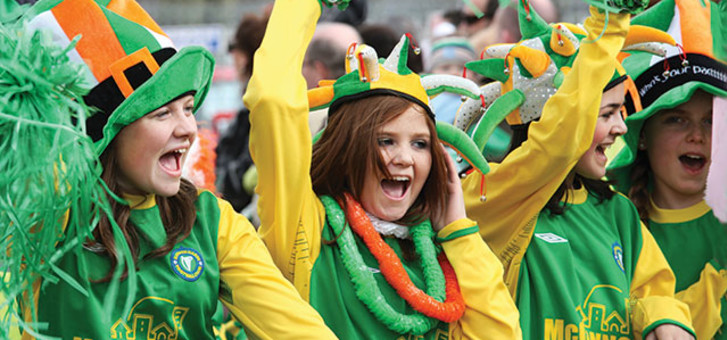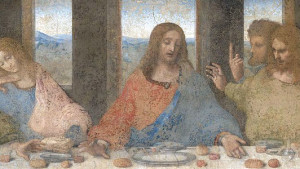It used to be celebrated only by the Irish, but ever more so, Saint Patrick’s Day has been met worldwide with the wearing of the green, the shamrock and ingesting copious amounts of alcohol following processions or gatherings in the name of Ireland’s patron saint.
Nobody actually knows the exact date, but it is generally believed that Patrick, the missionary who brought Christianity to Ireland, died on March 17, AD 461 and so each year, Saint Patrick’s Day is a public holiday in Ireland, and remembered wherever the Irish gather.
Who was Patrick?
There are many uncertainties about when and where Patrick was born and even about when he died. It is believed he was born around AD 385 or 386, but with few records surviving from the fourth century AD, it is difficult to know much of the details of Patrick’s life with any certainty.
We do know his father, Calphurnius, was a deacon in the early Celtic Church and his mother was named Conchessa. Patrick was born somewhere in Roman-controlled Britain, probably near the west coast. When he was nearly 16 years old, he was captured by Irish pirates and sold into slavery in the old Gaelic kingdom of Dalriada, Ireland. There seemed to be a virulent slave trade at the time, with a strong young lad worth several cows.
Patrick left us two surviving records and in his Confessio, or Confession, a spiritual autobiography, he records that he grew up in Bonavan, a small village in southern Scotland where his father had a small farm. This seems to be in the Strathclyde region of Scotland today, although some have suggested it was in Wales. Today, however, the town of Kirkpatrick in Scotland is named after him.
His name is thought to have been originally Succat, but was later changed to Patrick at his conversion. In Ireland, he is known as Padraig. Patrick wrote that in his early days, he did not really know God, and attributes his capture and forced slavery to God trying to teach him and his people to be true to Him.
As a young slave in Ireland, Patrick’s master was Milchu, a high priest of druidism. He was sent out to tend a flock of sheep on Slemish mountain in County Antrim, Northern Ireland. Here, he learned the language of the people and began to turn his heart toward God. Patrick spent much time in prayer.
As time went on, he turned to God on a daily basis and his love for God increased. He said he would sometimes pray up to 100 times a day. Even though the climate was often very cold and wet with both snow and rain, he kept his eyes on God. This, Patrick said, changed his life.
Time to go home
Six years Patrick spent as a slave sheep-herder living mostly alone on the mountains. Then he had a dream in which he was told to go back home and that some sailors would take him there. After being convicted that this was the voice of God, he deserted his work and made for the coast of Ireland.
This young escaped slave made his way some 290 kilometres south to the area of Wicklow. It was an exhausting and treacherous journey, escaping recapture, and constantly hungry and thirsty, but the conviction that God had called him home sustained him. Finally, he found a trading ship and offered to work to pay for his passage back to his homeland.
Some accounts have the ship landing in France, where Patrick began studies at Auxerre in Burgundy, while others claim he was at a monastery on the island of Lérins, off the French Riviera. Then there is an account, no doubt spurious, of him travelling to Rome and stealing up to 365 sacred relics. Patrick’s own account, however, merely says he arrived home, where he continued to study Christianity.
Soon, he received a divine conviction to take his vibrant Bible-based Christianity back to the land of his slavery. With a few followers, Patrick sailed for Ireland, coming first to the Wicklow area, then north, until he landed at Strangford Lough and the river Slaney. Here, his first convert was the local chief Dichu. Patrick was given a barn at Saul, County Down, where he built his first church, branching out from there with travels all over the country.
Ministry to Ireland
Patrick’s textbook was the Bible and his sole authority for founding the Irish Church came from it. While the early medieval church had already produced some creeds, Patrick never mentions or quotes from them, taking his beliefs from the Word of God only. This was his supreme authority. This gave him the vision and power to set Ireland on fire for God.
The Celtic Church was well organised under Patrick. Schools, previously associated with monasteries, were established with one point of difference: their leaders were allowed to marry. Here the Scriptures was the object of study. One of Patrick’s schools, Armagh, eventually became a university with up to 7000 students. Ireland truly was the “Land of saints and scholars.”
Ireland was such a beacon for education that the children of European rulers were sent to Patrick’s schools for a better quality education. One such was Columba, descendant of an Irish high king, who went on to become the main force to found the Culdee Church of Scotland, with Iona as his base. Then there was Columbanus, who founded a number of monasteries in Europe, and is remembered for his fervent missionary activities.
Many legends surround Patrick at this time and throughout his life: how he banished all snakes from Ireland; how he used the shamrock to illustrate the Trinity (a fact never substantiated); how he threw a stone altar overboard from a boat and it floated to give a leper passage. They were legends that took on a life of their own such that the real Patrick has become almost invisible.
What we do know is that the real Patrick was used by God in a special way and was honoured by his allegiance to God and to His Word. Patrick’s life was the Bible illustrated and he lived a life reflecting the values of Jesus.
Patrick was a humble man who not only preached and exhorted men and women to yield their lives to the God of heaven, but lived this on a daily basis. Patrick’s steadfastness of purpose is a great example to us today.
His legacy
Patrick’s life is a testament to those who endure hard times—in his case, slavery and the lack of family and comforts of life. However, even in the hardest circumstances, the God of heaven may come near and give hope. His was a triumph over paganism. He was a weak human and sorely tried, but strengthened by his faith in God and his calling.
One result of Patrick’s ministry was the faithfulness of the Celtic Church to the Ten Commandments of the Bible. Historians such as Alexander Flick, who wrote The Rise of the Medieval Church, demonstrated this fidelity to the Ten Commandments saying, “The Celts used a Latin Bible and kept Saturday [as prescribed in the Bible] as a day of rest, with other religious services on Sunday.”
Not much is known of Patrick’s death—even the date is disputed. Generally it is believed to have occurred on March 17, AD 461, but others place it up to 30 years later. His friend and disciple, Tassach, was with him as he passed away and while never proven, his grave is believed to be at Down Cathedral in Downpatrick, some 30 kilometres south of Belfast in Northern Ireland.
Commercialism has supplanted Patrick’s great values of life with a swilling of Guinness, the wearing of the green and great hilarity, but if we look for the real Patrick—not the Patrick of legend, imagination or commercialism—we see that life can be complete and rewarding.






